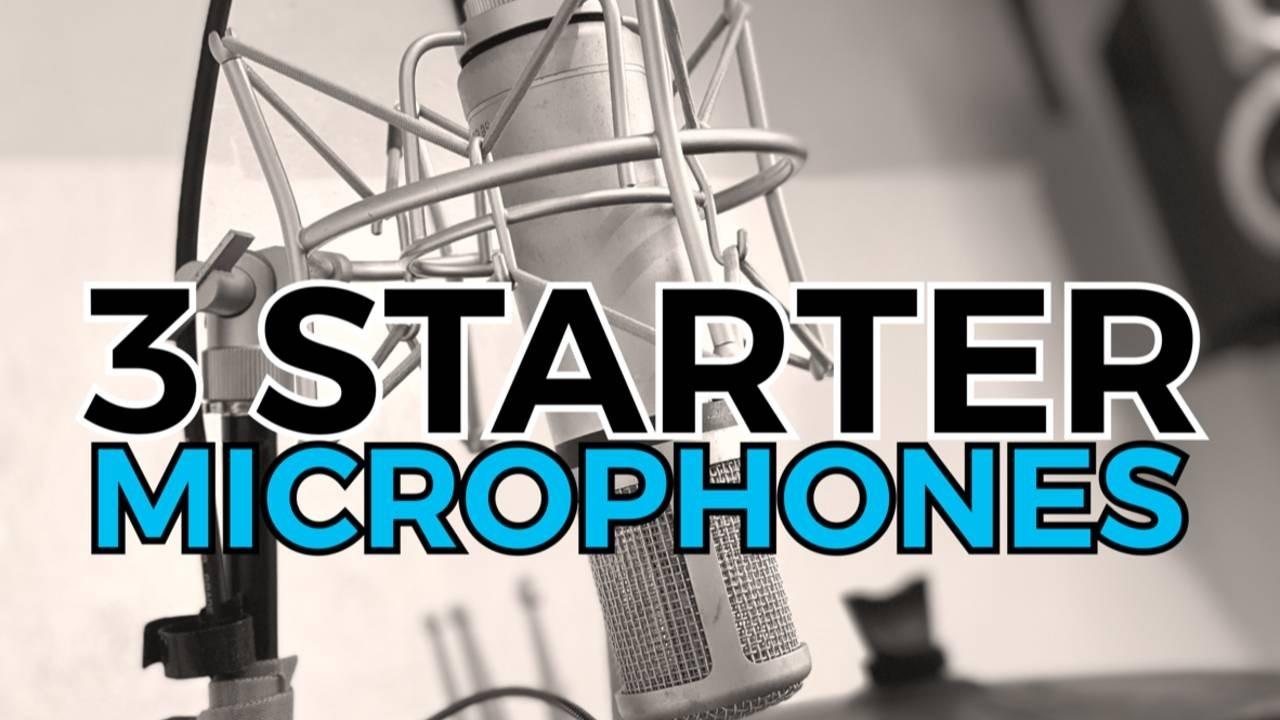3 Entry Level Microphones For Live Performance & Rehearsals
Oct 19, 2020
Who This Guide Is For:
This is for vocalists who are just starting out purchasing a microphone
What This Is & Isn't About:
This is a guide for three basic microphones that you cn get started with right away, that require not additional power (some mi, this is NOT a guide on how microphones work or a deep dive into how certain styles may suit you better.
--------------------------------------------
3 Starter Shure Microphones
Now, more than ever, there is a need for vocalists to protect themselves and their voice by making sure that they don't share microphones (and germs) with other singers.
The way to keep safe is to turn up like a champ, with your own equipment, plug it in and be ready to rock and roll!
As you get into a more professional setting of singing, you may also find that certain types of microphones and brands suit your voice far more than others and having your own choice on this will guarantee that your voice sounds as good as possible.
For now, this is guide to just get started and quickly, so here are three basic microphones, at three different price points to help you get started.
These microphones do not need additional power (some microphones need something called Phantom power to work) and you can simply plug them into an amplifier of some variety(providing you have the right lead/cable) and get started.
(For the sake of simplicity and ease of choice we are sticking with a single manufacturer called Shure, who are known, as well as for the sound quality, for their high build quality and durability...Very important with kids! (big and small))
Let's Start At The Top...
Most Recommended: Shure SM58 (Approx. £85-£100)
CLICK HERE FOR SM58 AMAZON LINK
The SM58 is an industry standard microphone, used for decades in many professional settings. If you get this microphone, it will last you for years to come. It has the following features (as well as it being built like a tank)...
- Frequency response tailored for vocals, with brightened midrange and bass rolloff to control proximity effect: This means it's made vocalists and controlling proximity effect means it controls the boost to the bass as you get closer to a speaker, (proximity effect is often used by DJs to get that classic deep DJ voice!)
- Uniform cardioid pickup pattern isolates the main sound source and minimises background noise: This means you get mostly just the vocals and not the rest of the band coming through the microphone.
- Pneumatic shock-mount system cuts down handling noise: Meaning that if you pass then microphone to your other hand, it reduces that clumsy, fumbling sound!
- Effective built-in spherical wind and pop filter: This is a feature that reduces the overbearing "Pff" noise when a word starting with P is pronounced.
- Frequency response: 50 to 15,000 Hz: This is basically the range of sound from low (50 Hz) to high (15,000 Hz) that the microphone is capable of receiving.
- CLICK HERE FOR SM58 AMAZON LINK
Lower Priced Microphone: Shure PG ALTA (Approx. £50)
CLICK HERE FOR PG ALTA AMAZON LINK
The Shure PG series of microphone are also fantastic, again built to last, not quite as high quality sound as the SM58 but a great place to start. This usually comes with a bundle as well including XLR cable (a type of 3 pin cable used throughout music to connect equipment) and a microphone clip (the plastic piece that attaches to a microphone stand and slots the microphone into) and a carry case.
- Tailored microphone cartridge design for natural clarity in the frequency range of vocal performance: This means it's suited for vocals.
- Cardioid polar pattern picks up audio from the source while rejecting unwanted noise: This means it's designed to reject the noise of surrounding sounds and instruments)
- Updated industrial design with black metallic finish and grille for unobtrusive visual presence: I suppose if you like that design choice :)
- On/Off switch for discrete control of microphone operation: Microphone can be turned off when not in use (although we usually tape this over to stop accidentally blasting into a song with the microphone turned off!)
- Stand adapter for mounting to a microphone stand: Usually referred to a the microphone clip, attaches to a microphone stand and is for the microphone to slot into.
- CLICK HERE FOR PG ALTA AMAZON LINK
Low Entry Price: Shure SV100 (Approx. £35)
CLICK HERE FOR SV100 AMAZON LINK
These are great starter point microphones, not recommended for studio recording but fantastic if you just want a cheap microphone that is sturdy and pretty low cost. As this is effectively going to do the same job as the above microphones, here are a few things that are different to the more expensive SM58 Microphone.
- The sound quality will not be as clear, often described as a "wooly" sound, meaning that it isn't as clear, although will do the job for most rehearsals.
- The microphone is not as good at reducing the noises from handling so you will hear noises as you pass between your hands or put back onto the microphone stand.
- The pop shield will not be there so when words pronounced with the starting letter of P are sounded, there will most likely be a louder "pop" sound heard.
- CLICK HERE FOR SV100 AMAZON LINK
With that said, if your price range doesn't extend beyond this, it will be perfect for your rehearsals and practise.
We hope that helps you make a decision with your microphone choice, our philosophy is that whatever gets you started is usually the best option!
Any questions, feel free to reach out.
Ryan
Interested In Our Programs
Let us know below
We'll only use your info to find out your music goals- no spam, ever

